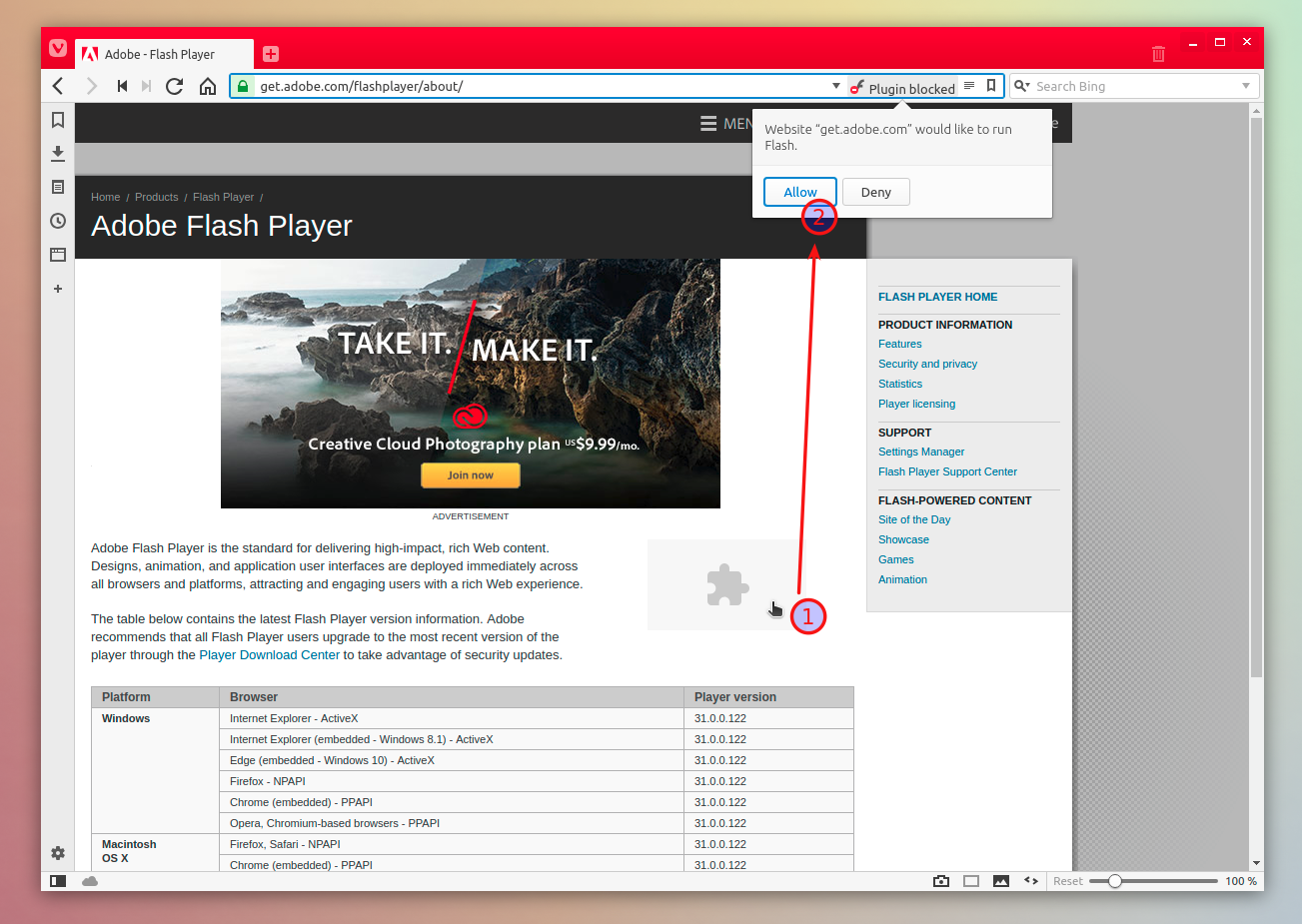

Using this method does not require you to restart Firefox. The first one listed should be the most recently installed, which will be flash. In this page you will see all installed plugins listed. Do this by typing about:plugins in the address bar. Once the installation has finished you will need to click the Finish button.Īfter the installation is complete you can check it by opening up the plugins page.
#INSTALL ADOBE FLASH PLUGIN UBUNTU PASSWORD#
You will be required to enter your user password to continue.
#INSTALL ADOBE FLASH PLUGIN UBUNTU INSTALL#
You will then be warned that the Adobe Flash Player will download and install another application. I made the mistake of installing one of the open source versions and had to uninstall so I could get the official version.Ĭhoose the Adobe version and click Next. Although I am a big supporter of open source software, both open source flash plugins are still in their infancy and are not yet up to par with the official version.


One is the official Adobe plugin and the other two are open source versions. Why? The reason for flash missing is because there are actually three different flash plugins you can install. By default there are a number of plugins already for you:īut the number one plugin is still missing. Ideally, of course, the distribution would ship with all of the necessary plugins installed. This article will illustrate to you this fact. During my first trials with Ubuntu 9.04 I discovered just how far the installation of browser plugins has come. When plugins first became a necessity for browsing Linux was at an "early" age and adding these plugins was truly a nightmare. If you've spent enough time over the years with Linux you know that the browser plug-in has been a source of agony for many.


 0 kommentar(er)
0 kommentar(er)
